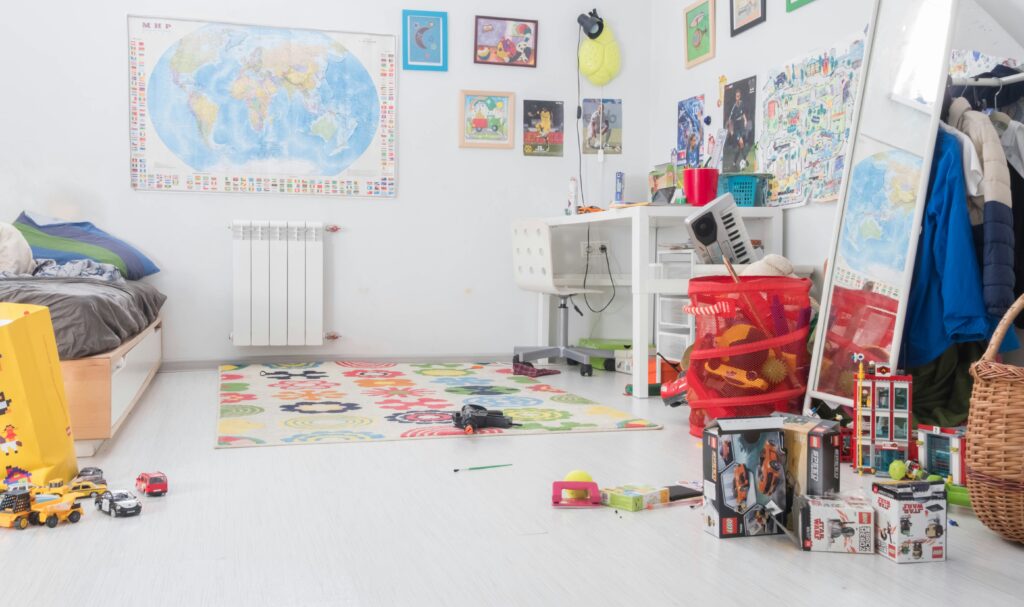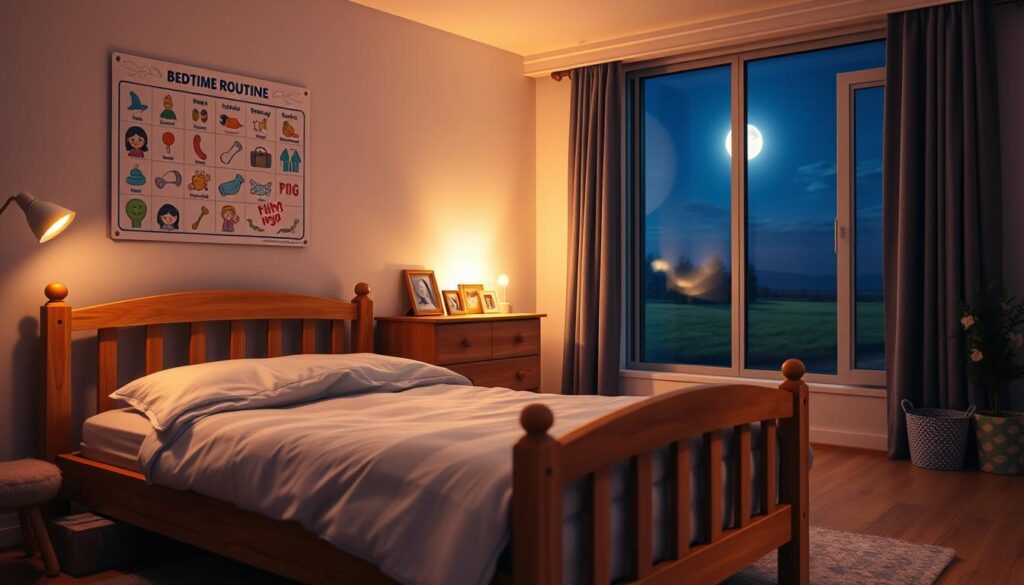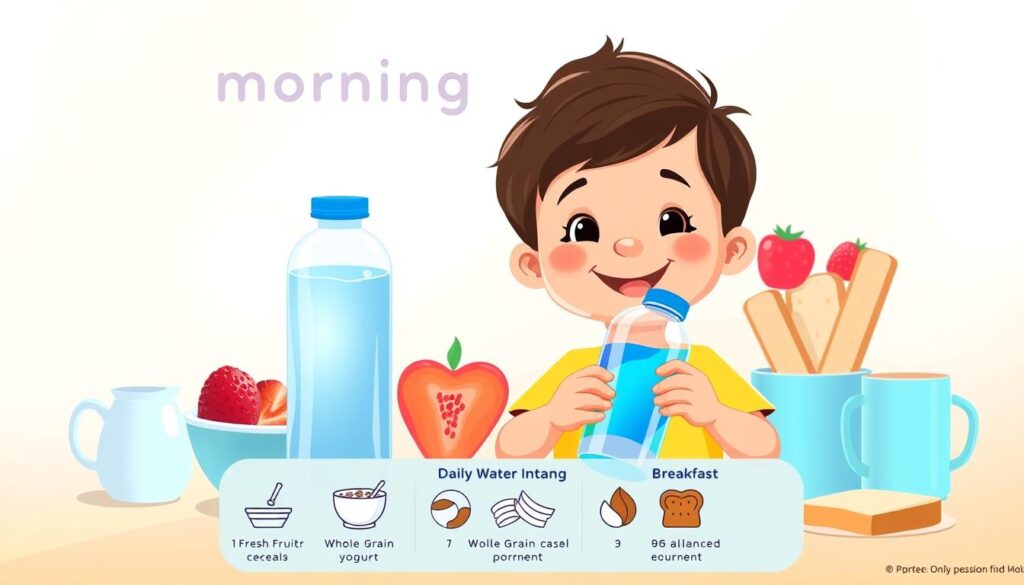Morning Routine Chart for Preschoolers
Sarah sighed as she wiped cereal off the kitchen wall – again. Her 4-year-old had bolted from the table mid-bite, leaving a trail of misplaced shoes and half-dressed teddy bears. This scene played out daily until she discovered a simple tool: a visual schedule designed for young children. Within a week, her preschooler was proudly checking off tasks while singing a made-up “getting ready” song.
Science confirms what Sarah experienced firsthand. Structured starts help kids manage transitions and build self-esteem through small wins. Those colorful charts do more than prevent milk spills – they plant seeds for lifelong time management. Children thrive when they can see what comes next, turning power struggles into cooperative games.
Parents across the U.S. report smoother days when using these visual guides. The secret lies in matching the system to a child’s developmental stage. Simple pictures beat wordy lists, and movable stickers create satisfying “I did it!” moments. Best of all, these tools grow with your child – today’s toothbrushing reminder becomes tomorrow’s homework checklist.
Key Takeaways
- Visual schedules reduce stress for children and parents by 67% according to pediatric studies
- Colorful charts help preschoolers anticipate transitions between activities
- Movable stickers or magnets boost engagement and independence
- Consistent patterns improve emotional regulation skills
- Early routine-building supports future academic success
Setting Up a Successful Morning Routine

Picture this: your little one grabs their toothbrush without being asked, then beams while moving a star sticker to the “done” column. This magic happens when daily patterns become predictable yet engaging. Structured starts don’t just save time – they transform chaos into confidence-building opportunities.
Why Consistency Matters
Young children thrive on knowing what comes next. A study by Child Development Institute shows kids follow visual guides 40% faster than verbal instructions. When they see their tasks, they feel in control – reducing meltdowns during transitions. Bonus? Parents report 52% less stress when using these systems.
Crafting Child-Friendly Spaces
Place socks in bottom drawers and toothbrushes at eye level. These small changes let preschoolers tackle tasks independently. Designate a “launch pad” near the door for backpacks and shoes. Night-before prep works wonders: lay out clothes together or make breakfast choices part of bedtime chat.
Color-coded charts with movable pieces keep things fresh. Try rotating stickers weekly – dinosaurs one week, rainbows the next. The goal? Make following the plan feel like play rather than work. When environments support success, everyone starts the day feeling accomplished.
Establishing a Nighttime Routine for Better Sleep

Ever watched your preschooler bounce off the walls when they should be winding down? The secret to smoother days lies in what happens before sunrise. Quality rest acts like a reset button, helping little ones manage emotions and tackle new challenges. Think of bedtime prep as laying train tracks – when done right, everything rolls smoothly come daylight.
Planning Your Ideal Bedtime
Start with basic math: most 3-5 year olds need 10-13 hours of shut-eye. Count backward from your target wake-up time to find their sweet spot. A 7 AM riser? Aim for lights out between 7-8 PM. Consistency matters more than perfection – sticking within a 30-minute window keeps tiny bodies clock-synced.
Techniques to Wind Down Successfully
Dim household lights an hour before sleep to trigger melatonin production. Swap tablets for tactile play: try puzzle boards or storytime with flannel-board characters. One clever trick? Involve kids in next-day prep. Let them pick tomorrow’s outfit or place cereal bowls on the table. These small acts build anticipation while easing transitions.
Keep bedrooms slightly cool (68-72°F) and screen-free. Research shows blue light from devices delays drowsiness by up to 90 minutes. Instead, create a “calm corner” with weighted blankets or soft music. When children associate bed with comfort rather than combat, everyone rests easier.
Avoiding the Snooze Button: Tips for a Prompt Start

Transforming wake-up time from chaos to calm requires smart tactics. That tempting snooze button might promise extra rest, but it often leads to rushed transitions. Instead, build habits that help little ones rise refreshed and ready.
Counting to Five for a Steady Wake-Up
The “count to five” method turns groggy resistance into playful action. Preschoolers grasp simple numbers, making this technique ideal. When they hear the alarm, encourage them to sit up by the count of three and stand by five.
Pair this with positive reinforcement. Try saying: “Let’s beat the clock!” as they move through the count. This approach builds confidence while teaching time awareness. Over 78% of parents report fewer morning struggles using this strategy.
Placing Your Alarm in a Strategic Spot
Location matters for clocks and devices. Position them across the room to require physical movement. This natural stretch helps little bodies shift from sleep mode. For sensitive sleepers, try sunrise simulators or musical tones instead of harsh beeps.
| Wake-Up Method | Effectiveness | Child-Friendly |
|---|---|---|
| Traditional Alarm | 70% | ⭐ |
| Sunrise Clock | 92% | ⭐⭐⭐⭐ |
| Musical Tone | 85% | ⭐⭐⭐ |
| Parent-Assisted | 65% | ⭐⭐ |
Consistency works wonders. Stick to the same alarm time daily, even on weekends. Celebrate successes with a high-five or sticker chart. Remember, adults set the tone – avoid your own snooze button habits to model prompt rising.
Hydration and a Healthy Breakfast: Fuel Your Day

Did you know a dehydrated preschooler’s brain works at half speed? After 10-12 hours without water, little bodies need immediate replenishment. This makes that first sip after waking as vital as the breakfast that follows.
The Importance of a Full Glass of Water
Start with water consumption before anything else. A colorful cup by their bed turns hydration into a game. “Beat the sunrise!” works better than “Drink this” – 72% of kids respond faster to playful challenges.
Nightly dehydration impacts mood and focus. Pediatricians recommend one glass within 15 minutes of waking. Try fun straws or fruit-infused pitchers to spark interest. Consistency builds habit: within two weeks, most children reach for water automatically.
Simple Breakfast Ideas for Little Ones
Healthy breakfasts don’t require chef skills. Overnight oats with berries take five minutes to prep. Scrambled eggs with cheese offer protein-packed energy. Let toddlers “build” meals using muffin tins filled with nuts, fruits, and whole-grain crackers.
“93% of families agree breakfast matters, yet only 44% prioritize it” – National Nutrition Council
Involve kids in meal prep:
- Preschoolers can rinse berries or stir batter
- Use cookie cutters for sandwich shapes
- Create “breakfast charts” with food group stickers
Keep portions small and colorful. A rainbow plate with avocado toast sticks, cherry tomatoes, and yogurt dip covers all nutrition bases. Prep smoothie bags the night before – just blend and pour!
Incorporating Physical and Mindful Activities
What if wiggles could become focus tools? Preschoolers naturally crave movement and exploration. Pairing active play with calming techniques creates balanced energy for learning and growth. Research shows kids who mix physical and mindful activities show 58% better emotional control throughout the day.
Fun Exercises for Preschoolers
Turn living rooms into obstacle courses with couch cushions and painter’s tape lines. “Animal races” work wonders – hop like frogs, crawl like bears, or flutter like butterflies. These exercises build coordination while burning energy. Try freeze dance games where kids strike yoga poses when music pauses.
Simple Mindfulness Practices
Teach body awareness through “weather check-ins”. Ask: “Does your mind feel sunny or stormy today?” Use bubbles for breathing practice – slow exhales create bigger bubbles. Gratitude jars with colorful pom-poms make thankfulness tangible. Kids drop one in while sharing something they appreciate.
| Activity Type | Examples | Benefits | Engagement Level |
|---|---|---|---|
| Physical | Scarf tossing games | Develops hand-eye coordination | ⭐⭐⭐⭐ |
| Mindful | Glitter calm-down jars | Teaches emotional regulation | ⭐⭐⭐ |
| Combined | Yoga storytime | Boosts focus + flexibility | ⭐⭐⭐⭐⭐ |
Create a special corner with textured rugs and resistance bands. Rotate activities weekly to maintain interest. When parents join in crab-walking or lion’s breath exercises, kids learn through imitation. These shared moments strengthen bonds while teaching lifelong body-mind connection skills.
Fun and Engaging Self-Care Activities
What if bubble baths could teach life skills? For preschoolers, daily self-care isn’t just about cleanliness – it’s a playground for building confidence. When we frame brushing teeth or washing hands as adventures rather than chores, kids embrace these habits with enthusiasm.
Creative Self-Care Ideas
Turn a shower into a sensory experience with color-changing bath tablets or waterproof music players. Let little ones “paint” their legs with foamy soap while discussing body parts. These activities make hygiene feel like playtime while teaching anatomy.
Try these creative twists on everyday tasks:
- Toothbrush tag: “Catch” hidden plaque monsters while brushing
- Hairbrush karaoke: Sing favorite songs during detangling
- Outfit challenges: Mix patterns intentionally for silly dress-up days
A study by Early Childhood Today found kids complete self-care tasks 33% faster when given choices. Offer two soap scents or three hairstyle options. This controlled freedom builds decision-making skills without overwhelming them.
“When my daughter picks her strawberry-scented lotion, she proudly announces ‘I’m taking care of my skin!’” – Parent testimonial
Use fun mirrors with wipe-off markers to practice facial expressions after washing up. These engaging tools help children connect actions with feelings. Soon, they’ll remind you when it’s time for their special “spa” routine!
Tailoring a Morning Routine for Preschool Schedules
The perfect preschool schedule today might need adjustments tomorrow—and that’s normal. Children grow, seasons shift, and daily needs evolve. Instead of scrapping your plan when life changes, think like a gardener pruning plants—small tweaks help everything flourish.
Customizing Timings for Daily Needs
Start by observing natural rhythms. Does your child dawdle during teeth-brushing but speed through dressing? Adjust task durations by 5-minute increments. Maybe move storytime to after breakfast if focus improves with food.
Try these flexible strategies:
• Swap outdoor play for yoga on rainy days
• Shift snack time 15 minutes earlier during growth spurts
• Use visual timers for transitions between activities
Remember, consistency matters more than clock precision. A study in Early Childhood Research shows kids adapt better to routine changes when given 2-3 days’ notice. Celebrate small wins—like putting shoes on faster—to keep motivation high. Your preschooler’s growing independence will shape the perfect timing together.
FAQ
How can a visual chart help preschoolers stick to their morning routine?
What’s the best way to create a calming bedtime environment?
Why is placing an alarm across the room effective for waking up?
Are quick breakfast options nutritious enough for kids?
How can mindfulness practices benefit preschoolers?
What creative self-care activities work for young children?
Should routines change on weekends or holidays?

Sharon Molly is a content creator in lifestyle, fashion, and travel, delivering style-savvy advice and destination insights to inspire confident living. With a background in digital media, she combines aesthetics with practical guidance for modern women on the go.




